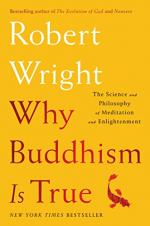
|
| Name: _________________________ | Period: ___________________ |
This test consists of 15 multiple choice questions and 5 short answer questions.
Multiple Choice Questions
1. The author states that neither kind of module in the chocolate anecdote was more what than another?
(a) Definitive.
(b) Concrete.
(c) Abstract.
(d) Rational.
2. Within which type of psychology have scientists learned that people can judge each other quickly through non-verbal communication?
(a) Social psychology.
(b) Behavioral psychology.
(c) Abnormal psychology.
(d) Animal psychology.
3. In an experiment, male respondents in rooms with women were more likely to rate what as an important goal?
(a) Attractiveness.
(b) Career.
(c) Wealth acquisition.
(d) Survival.
4. Which of the following feelings is the most often studied in connection with mental modules?
(a) Obsession.
(b) Hoarding.
(c) Sexual jealousy.
(d) Material envy.
5. The author states that what element only acts as a proxy between various feelings?
(a) Reason.
(b) Intuition.
(c) Synapses.
(d) Sight.
6. For what purpose does the author use open Chapter 10 with a quote from Samadhiraja Sutra?
(a) To add credibility to his account of Buddhist truths.
(b) To present a counterargument for his own views.
(c) To demonstrate his cultural awareness.
(d) To give a famous example related to the chapter's focus.
7. The author compares self-discipline to what part of the human body?
(a) A bone.
(b) A heart.
(c) A blood vessel.
(d) A muscle.
8. What sound does the author refer to in his personal anecdote about reducing negative feelings?
(a) The sound of traffic.
(b) The sound of the dishwasher.
(c) The sound of a buzz saw.
(d) The sound of a jackhammer.
9. The author states that as times change, so should conclusions and what other element?
(a) Behaviors.
(b) Understandings.
(c) Findings.
(d) Modules.
10. The dorsolateral prefrontal cortex is described as the seat of what?
(a) The ego.
(b) Abstract reasoning.
(c) Paranoia.
(d) Emotions.
11. The author states that he understands if the reader sees the words "formlessness" and "emptiness" and thinks of which two other words?
(a) Crazy and depressing.
(b) Gloomy and doomed.
(c) Bleak and stark.
(d) Unflinching and rigorous.
12. The author states that specific types of what can turn off the autopilot mode for feelings?
(a) Music.
(b) Meditation.
(c) Behavioral therapies.
(d) Exercises.
13. The author states that he suspects that what word is dependent upon "a melange of feelings that you've come to associate with" this object?
(a) Butterfly.
(b) Ocean.
(c) Biscuit.
(d) Cloud.
14. The author states that people often impose beliefs and structure onto various what?
(a) Sights.
(b) Sounds.
(c) Religions.
(d) Smells.
15. With what system is the dorsolateral prefrontal cortex associated?
(a) The endocrine system.
(b) The adrenal system.
(c) The dopamine system.
(d) The prefrontal cortex system.
Short Answer Questions
1. Robert Zajonc equates having feelings about something with performing what other action?
2. What kind of teacher is Rodney, the man described by the author within one particular anecdote?
3. An intertemporal utility function represents how willing a person is to delay what?
4. What object does the author use as a metaphor for the feelings that connect one’s conscious mind and one’s thoughts?
5. What is the Samadhiraja Sutra?
|
This section contains 483 words (approx. 2 pages at 300 words per page) |

|




